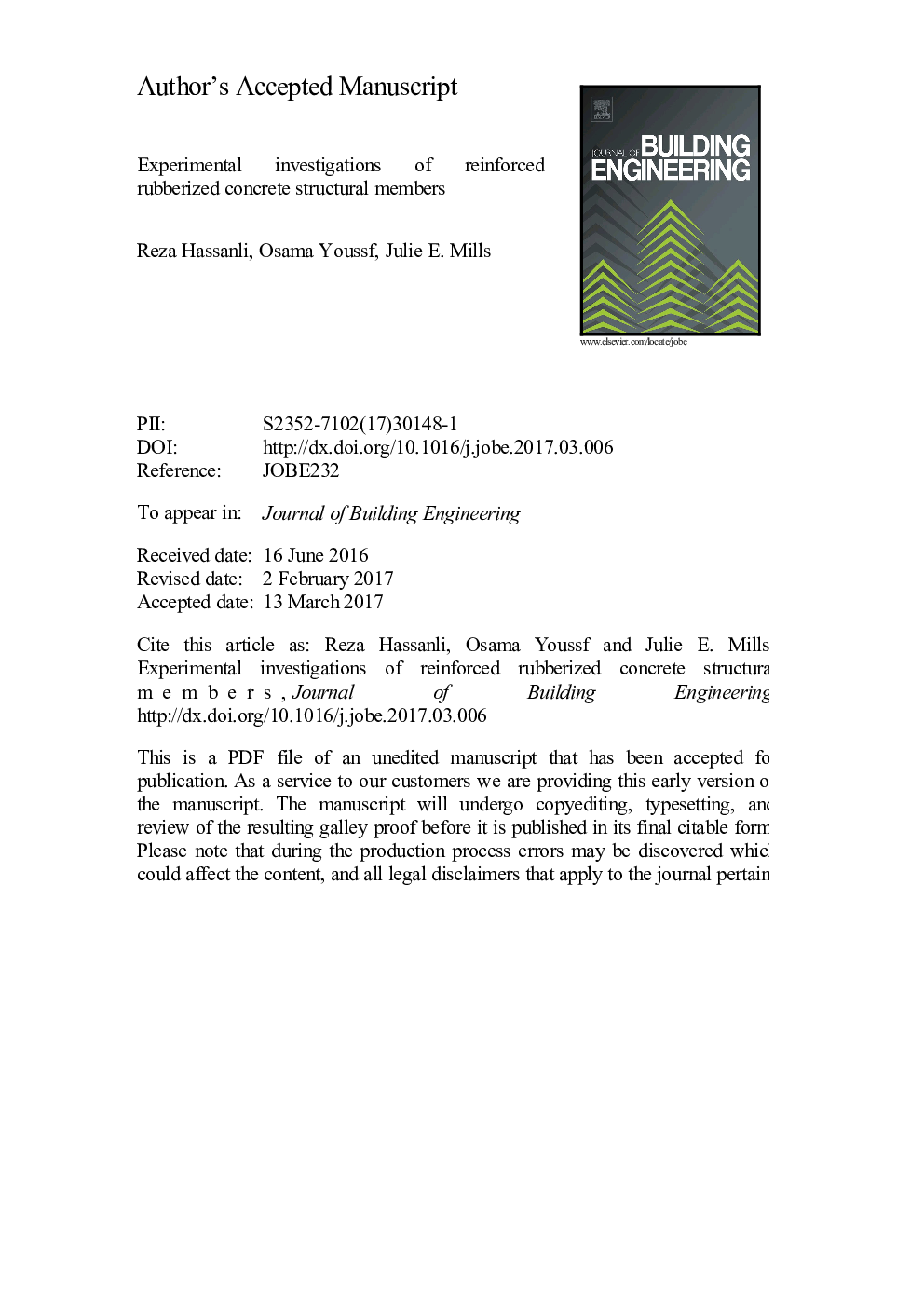| Article ID | Journal | Published Year | Pages | File Type |
|---|---|---|---|---|
| 4923101 | Journal of Building Engineering | 2017 | 38 Pages |
Abstract
This paper reports on an experimental study carried out to understand the behavior of rubberized concrete at the structural application level and to numerically predict the behavior of rubberized concrete beams and columns. Four reinforced concrete (RC) beam specimens and four RC column specimens, made out of rubberized concrete having 0%, 6% 12% and 18% replacement of sand volume by crumb rubber, were fabricated to examine the effects of rubber content on their structural behavior. The beam specimens were tested under incrementally increasing cyclic loading and their performances including damage pattern, failure mode, force-displacement response and energy dissipation behavior were compared. The column specimens were tested under eccentrically monotonic loading and their behaviors were compared. This experimental study indicates that while by increasing the rubber content from zero to 18%, the material compressive strength reduced by about 31%, the reductions in the ultimate capacities of beam and column members (made out of the same concrete materials) were only about 6% and 12%, respectively. As the rubber content increased the compressive strain capacity increased. This study showed that adding rubber to concrete increased the viscous damping ratio and kinetic energy; however, it had adverse impact on the dissipated hysteretic energy.
Keywords
Related Topics
Physical Sciences and Engineering
Engineering
Civil and Structural Engineering
Authors
Reza Hassanli, Osama Youssf, Julie E. Mills,
